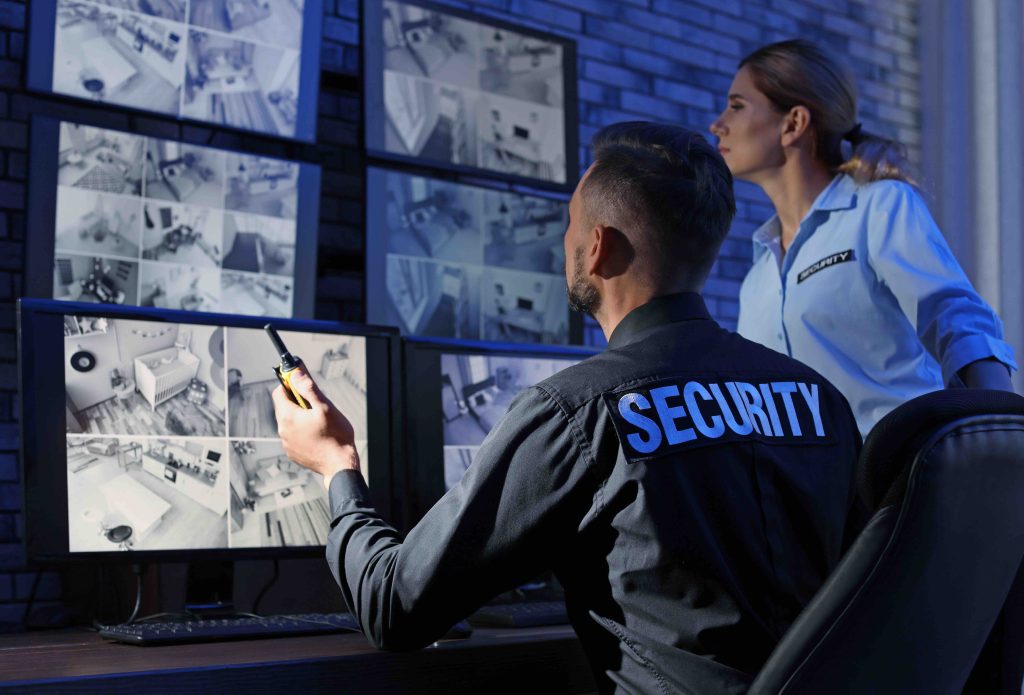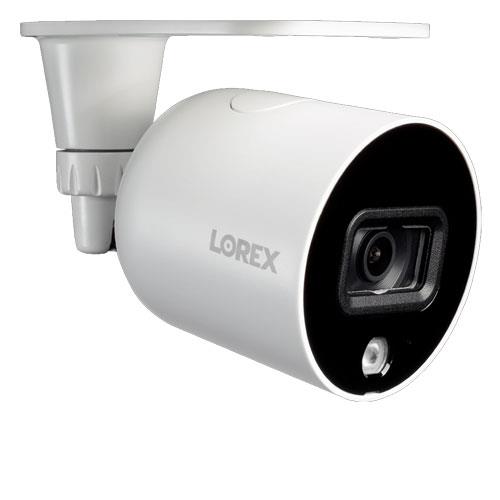Enhancing Physical Security with Security Cameras
Security cameras have become increasingly popular as a way to enhance physical security in homes, businesses, and public spaces. Security cameras can provide real-time surveillance of the surrounding area and record video footage that can be used to deter burglars, monitor activity, and aid in the investigation of security incidents. In this article, we will explore the benefits of security cameras and how they can enhance physical security.
- Deterring Criminal Activity – One of the primary benefits of security cameras is that they can deter criminal activity. Burglars and other criminals are often looking for easy targets, and the presence of security cameras can make them think twice before attempting a break-in. Research has shown that the presence of security cameras can reduce the incidence of burglaries and other crimes, as criminals are more likely to be caught on camera. In addition, security cameras can also deter employees from engaging in theft or other illegal activities in the workplace.
- Real-Time Monitoring – Another benefit of security cameras is that they allow real-time monitoring of the surrounding area. This can be especially useful for businesses and public spaces, as it allows for quick response in the event of an emergency or security incident. Security cameras can be connected to a monitoring service or a security company, which can provide round-the-clock surveillance and dispatch the police or fire department in the event of an emergency. Real-time monitoring can also provide peace of mind, as you can check in on your property at any time, from anywhere, using a smartphone app or web portal.
- Recording Video Footage – Security cameras can also record footage that can be used to aid in investigating security incidents. Video footage can provide evidence of criminal activity, such as a break-in, theft, or vandalism, and it can be used to identify the culprits. Video footage can also provide valuable information for insurance claims and legal proceedings. In addition, video footage can be used to monitor employee behavior and performance, which can help to improve productivity and resolve disputes.
- Types of Security Cameras – There are several types of security cameras, including indoor, outdoor, fixed, and pan-tilt-zoom (PTZ) cameras. Indoor cameras are designed for indoor use, while outdoor cameras are designed for outdoor use and can withstand harsh weather conditions. Fixed cameras provide a fixed view of a specific area, while PTZ cameras can be remotely controlled to pan, tilt, and zoom in on specific areas. Some security cameras also have night vision capabilities, which allow them to capture clear images in low-light conditions.
- Wireless vs Wired Cameras – Security cameras can also be classified based on their connection type, as either wired or wireless. Wired cameras require a physical connection to the power source and a network cable to transmit data. They are typically more reliable than wireless cameras, but they can be more difficult to install, as they require running cables through walls and ceilings. Wireless cameras use Wi-Fi or cellular data to transmit data, which makes them easier to install, as they do not require running cables. However, they may be subject to signal interference, which can reduce their reliability.
- Smart Home Integration – In recent years, security cameras have become increasingly integrated with smart home systems. This allows for seamless integration with other smart home devices, such as door locks, lights, and thermostats, which can be controlled from a single app or web portal. This can provide added convenience and peace of mind, as you can control all of your smart home devices from anywhere, at any time.

Integration of Security Cameras and Alarm Systems
Security cameras and alarm systems can be integrated to provide a comprehensive security solution for homes and businesses. The integration allows for a more efficient and effective security system, as the two systems can work together to enhance the overall security of the premises.
Alarm systems typically have sensors placed throughout the building, such as door and window sensors, motion detectors, and glass break detectors. These sensors are designed to detect intrusions or security breaches and trigger an alarm in the event of an emergency. However, in some cases, the sensors may not be enough to determine the cause of the breach.
This is where security cameras come in. By integrating security cameras with the alarm system, the cameras can be used to verify the cause of the alarm and provide real-time visual information about the situation. This information can be used to determine the appropriate response, whether it be to dispatch the police or simply turn off the alarm.
There are several ways to integrate security cameras with an alarm system, including using a video verification system, a central monitoring station, or a cloud-based system. A video verification system uses a closed-circuit television (CCTV) system to capture and transmit video footage to a central monitoring station, which is monitored by security personnel. The central monitoring station can then use the video footage to verify the cause of an alarm and determine the appropriate response.
Another way to integrate security cameras with an alarm system is through the use of a cloud-based system. In this type of system, the security cameras are connected to the internet and can be accessed from anywhere in the world through a web browser or mobile app. The cloud-based system can also be integrated with the alarm system, allowing the cameras to be used to verify the cause of an alarm and provide real-time video footage to the central monitoring station.
One of the benefits of integrating security cameras with an alarm system is that it provides a more comprehensive security solution. The cameras can be used to monitor the premises 24/7, even when the alarm system is not triggered. This can provide peace of mind for homeowners and businesses, as they can be confident that their property is being monitored and protected at all times.
Another benefit of integrating security cameras with an alarm system is that it can reduce false alarms. False alarms are a common problem with traditional alarm systems, as they can be triggered by a variety of factors, such as pets or environmental conditions. By using security cameras to verify the cause of an alarm, false alarms can be reduced, which can save time and resources for both the homeowner and the security personnel.
Finally, integrating security cameras with an alarm system can also provide valuable evidence in the event of a security breach. The video footage captured by the cameras can be used as evidence in a criminal investigation, as it provides visual proof of what occurred during the breach. This evidence can be used to help identify and prosecute the perpetrator, which can provide closure for the victim and help prevent similar incidents from happening in the future.
In conclusion, integrating security cameras with an alarm system can provide a comprehensive security solution for homes and businesses. The integration can provide real-time visual information about security breaches, reduce false alarms, and provide valuable evidence in the event of a security breach. With the advancements in technology, it is now easier than ever to integrate security cameras with an alarm system, providing peace of mind for homeowners and businesses alike.



